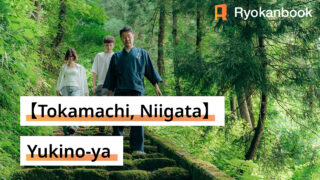This time, I’d like to introduce Sake Inn Tamakiya, located in Matsunoyama Onsen, Tokamachi City, Niigata. The inn offers over 1,000 kinds of sake and wine, paired with dishes crafted from local ingredients. Matsunoyama Onsen itself is also known as one of Japan’s “Three Great Medicinal Hot Springs.”
The cuisine at Tamakiya was awarded one Michelin star for French cuisine in the Michelin Guide Niigata 2020 Special Edition. The owner, Mr. Yamagishi Yuichi, is both a sommelier and a Sake Shō (酒匠)—an advanced qualification above the level of sake sommelier.
I visited in late July, the height of summer. From check-in, to soaking in the hot spring, to a dinner with sake pairings, and finally the morning after—it was a two-day, one-night stay that I’ll share here just as I experienced it.
▷View more details about ”Tamakiya”
Hello! I’m a university student currently living in Taiwan. Through my travels around Japan, I look forward to discovering the people, the land, and the ways of life deeply rooted in each place.
- The Strength of a “Small Inn Dedicated to Sake”
- Check-In|Starting with a Sparkling Gin and a Melon Tart
- 【Guestroom with Open-Air Bath at Tamakiya】 Serenity that Unwinds All Five Senses in the Cypress Suite
- Sister Property “Suimu” | Bar & Dining with Private Sauna
- 【Dinner】 A Journey into Local Gastronomy with Sake Pairings
- Morning Feast|Enjoy a Breakfast Featuring Uonuma Koshihikari Rice and Local Vegetables from Niigata
- Summary | The Vision of Yuichi Yamagishi, Owner of Tamakiya
- Exploring Kiyotsu Gorge, One of Japan’s Three Great Canyons
- 【About Kiyotsu Gorge】Majestic Columnar Rock Formations Shaped by Nature
- 【Into the Tunnel】 Walking the “Tunnel of Light”
- 【Conclusion】 What This Land Invites You to Reflect On
The Strength of a “Small Inn Dedicated to Sake”
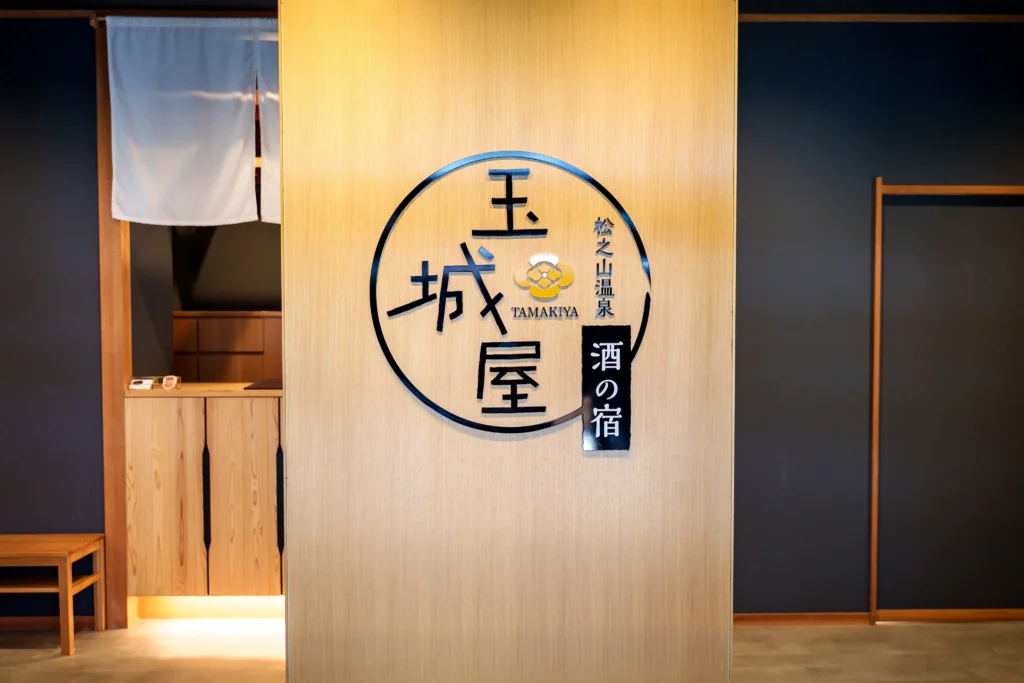

As its name suggests, Tamakiya is an inn fully devoted to sake. With over 1,000 varieties of sake and wine, it offers countless experiences you can’t find anywhere else. Because it’s a small inn, the food and drink pairings are fine-tuned to match not only the day’s ingredients but even the expressions of the guests. In the middle of the course, the staff might say, “I think a sake with brighter acidity will suit better today,” and make subtle adjustments on the spot—something truly unique to this place.
The hospitality is attentive but never pushy, and the explanations are always concrete. Everything is grounded in the expertise of the owner, Mr. Yuichi Yamagishi, who is both a certified sommelier and a Sake Shō (酒匠)—an advanced title above sake sommelier. With only about 570 people holding this qualification, it speaks to its difficulty and prestige. Thanks to his deep knowledge, you can trust every recommendation without hesitation.

Staying here is all about freedom and quiet. If you book a room with a private bath, you’ll hardly encounter other guests. After checking in, you can relax in the hot spring, enjoy sake pairings with dinner in the dining room, and then retreat to your room to savor the lingering aftertaste in silence.
The cuisine follows a “Niigata-only” philosophy. Fish, vegetables, fermentation, rice—wherever possible, ingredients are sourced from within the prefecture, letting you experience Niigata directly on the plate. Even the rice is carefully chosen by Mr. Yamagishi himself, after taste-testing different varieties. Once you know the story behind it, each bite carries an added sense of conviction and depth.
Who This Stay Is For
- Those celebrating a special occasion—an anniversary, a birthday, or simply a memorable night—with the finest food and sake.
- Anyone who wants to fully enjoy the art of sake and wine pairings.
- Travelers seeking peace and quiet, with the option to spend the entire stay in a small inn and a private bath without interruption.
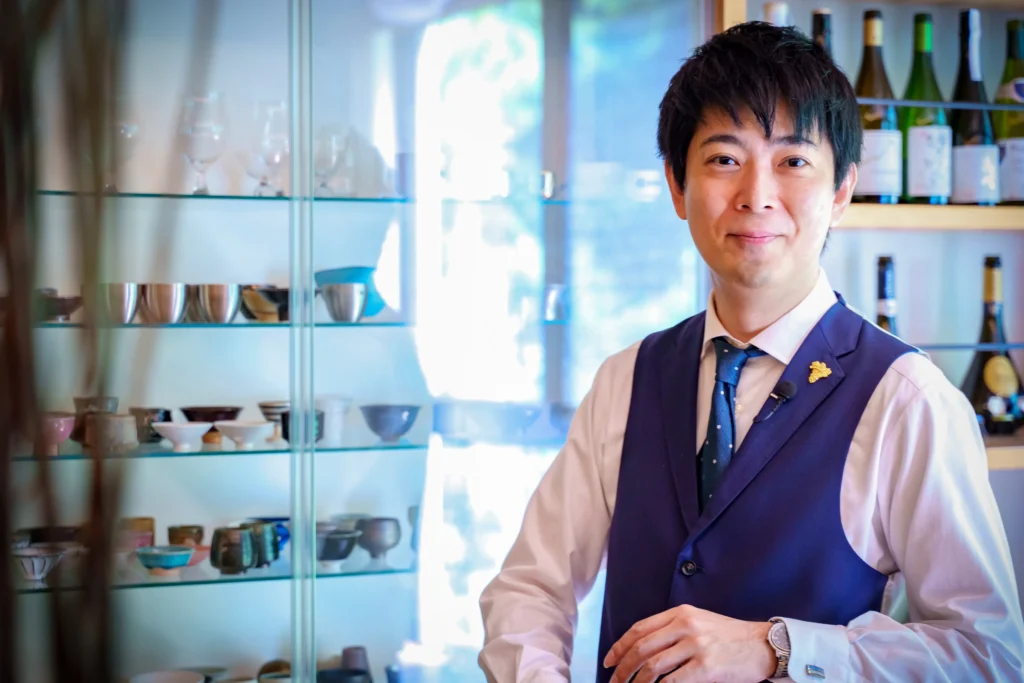
And the person who shaped Tamakiya as it is today is the fourth-generation owner, Mr. Yuichi Yamagishi.
Originally, Tamakiya was a family-run traditional ryokan. After training in Japanese cuisine in Tokyo, Mr. Yamagishi decided, “If I return home, I’ll bet everything on sake.” He boldly transformed the inn into a “sake inn.” At first, there was resistance—people worried it was “too specialized” or that “guests would stop coming.” But he stuck to his principle of serving only what he himself truly found delicious, drawing on his expertise as both a sommelier and a Sake Shō (酒匠).
The result is the style that defines Tamakiya today: cuisine paired with sake (and wine), which has gained strong support and recognition.
In short, Tamakiya is an inn that went all-in on what it loves. Along with its incredible lineup, the personalized hospitality elevates each guest’s experience. That, I felt, is the true value of a sake inn.
Check-In|Starting with a Sparkling Gin and a Melon Tart

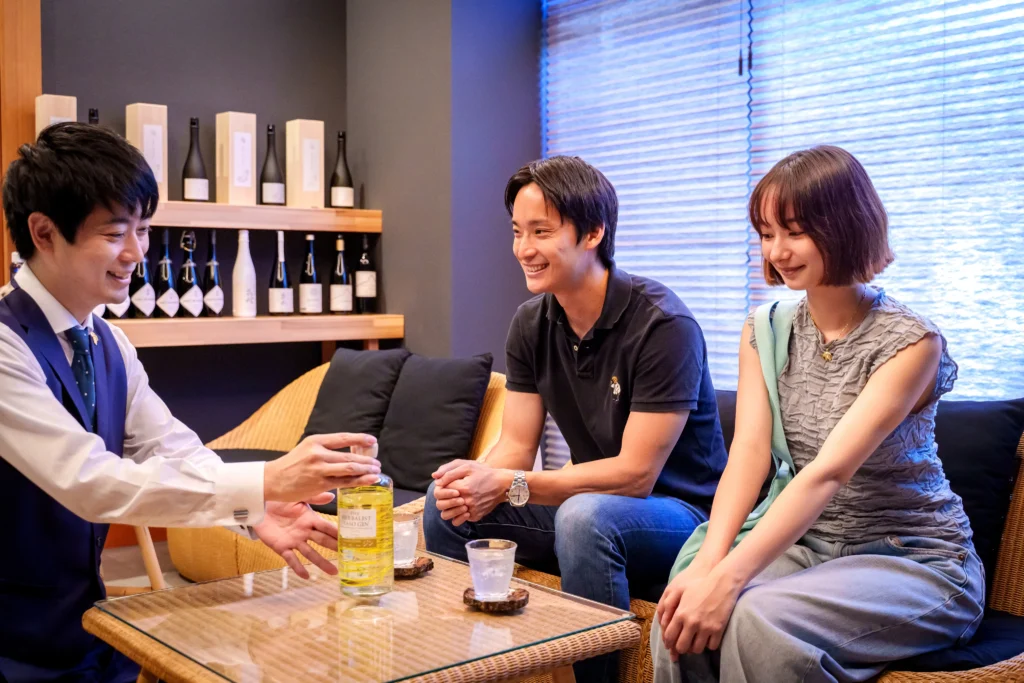
At the front desk, I was first welcomed with a sparkling gin and soda. From that very first sip, it was clear—this truly is a sake inn. The chilled bubbles went down smoothly, washing away the fatigue of my journey.
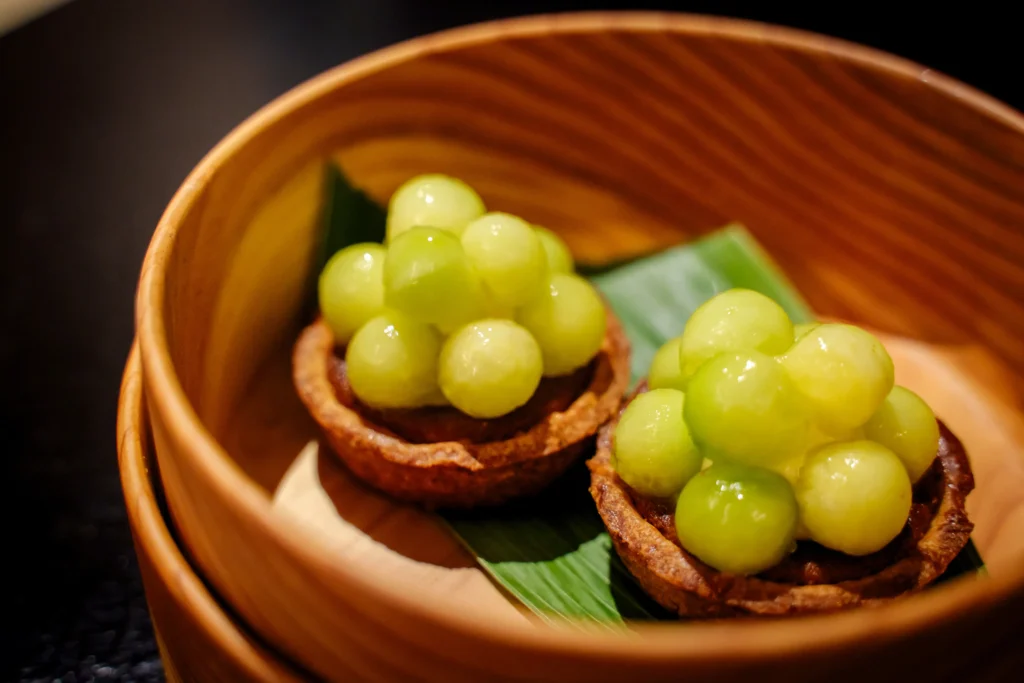
And right after stepping into the room, I was greeted with a melon tart. It was small, adorable, and honestly Instagram-worthy. The crisp base paired beautifully with the refreshing sweetness of the melon. Light and not overly rich, it’s the perfect treat for anyone with a sweet tooth—not just women. From the very start, I felt immersed in the inn’s unique world of sweets × sake, and my anticipation for the pairing dinner ahead only grew stronger.
【Guestroom with Open-Air Bath at Tamakiya】 Serenity that Unwinds All Five Senses in the Cypress Suite
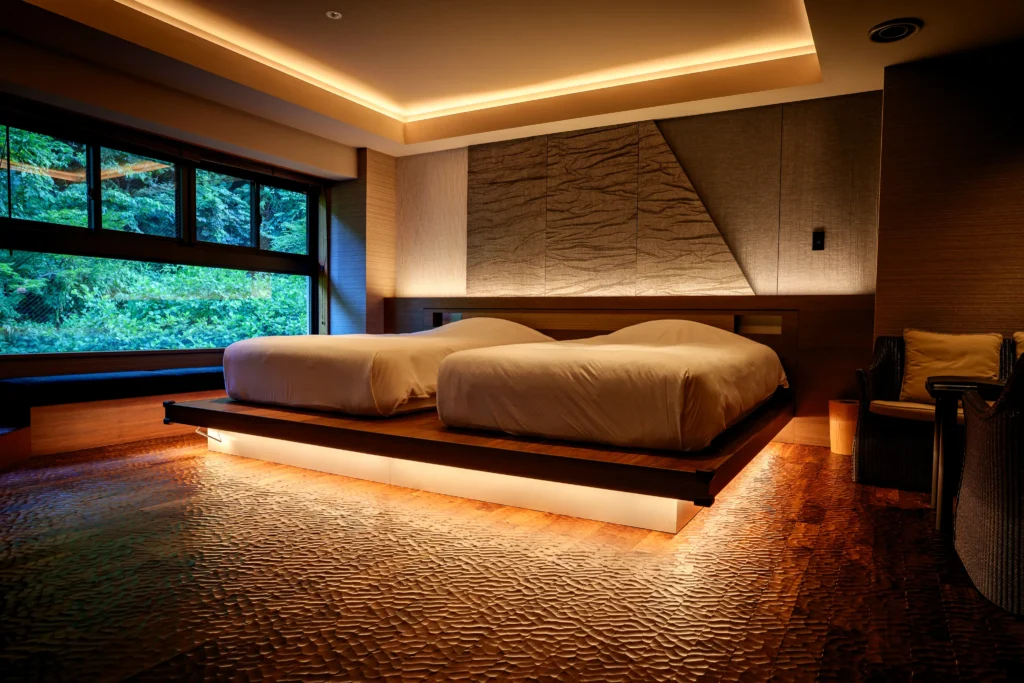
I stayed in the Hinoki room, which comes with an open-air bath.
What struck me most was the flooring — carved with gentle grooves that feel amazing under bare feet. The whole room is wrapped in the warmth of wood, and it immediately put me at ease. The bed, a Simmons mattress, let my body completely relax, and honestly, it’s been a long time since I slept that deeply. With its small scale and quiet atmosphere, this inn feels more suited to “resting” than “entertaining.”
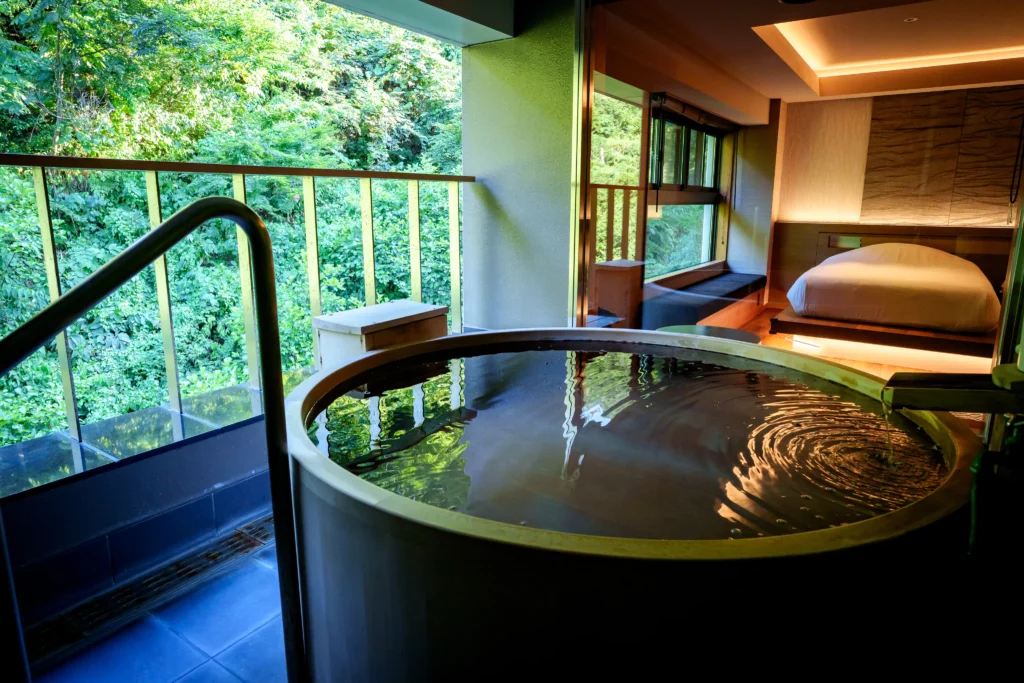
In the early morning, I slipped into the private open-air bath of the Hinoki room.
The water here is gensen kakenagashi , which means it flows directly from the hot spring source without recycling or added heating. Because of that, it’s naturally hotter than the shared baths, so you adjust the temperature yourself by adding cold water. It took me a moment to get it right, but once settled in, I was surrounded by trees, with the steam blending into the greenery—a perfectly quiet way to start the day.
The facilities and layout are intuitive, so even overseas guests would have no trouble using them. As for the water itself, Matsunoyama Onsen is counted among Japan’s “Three Great Medicinal Hot Springs,” and you can really feel why. Instead of just feeling relaxed, I came out with a sense of recovery. The high salt content makes the body feel buoyant, and afterward my skin was remarkably smooth.
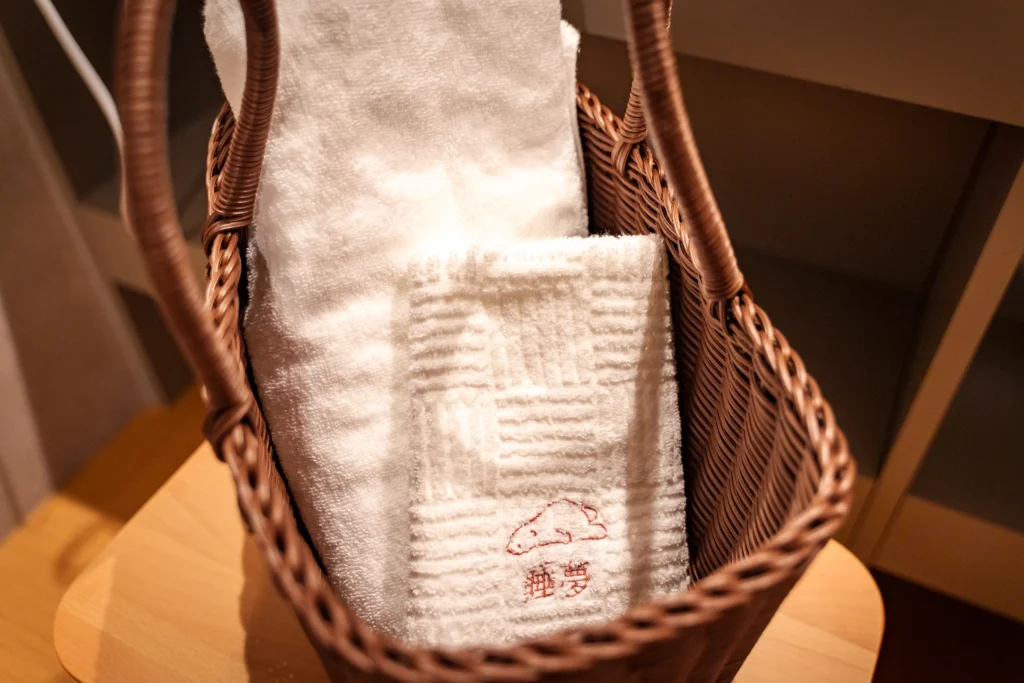
The amenities reflect a sustainable mindset—for example, bamboo toothbrushes are provided, each designed to last about a month. Practical touches like this make it easy to relax, knowing that care extends even to the smallest details.
Overall, the Hinoki room is better suited for true rest rather than busy sightseeing. The textured wooden floors under bare feet, the natural warmth of timber, the comfort of a Simmons bed, and the revitalizing power of the hot spring—every element works together, each one quietly but effectively “doing its job.”
Sister Property “Suimu” | Bar & Dining with Private Sauna
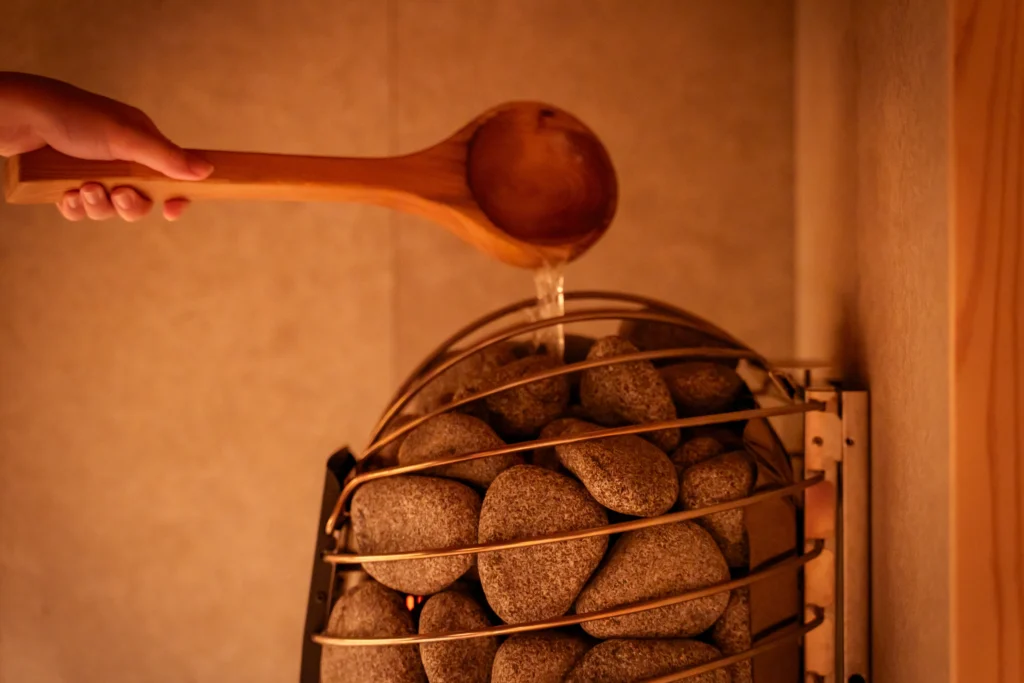
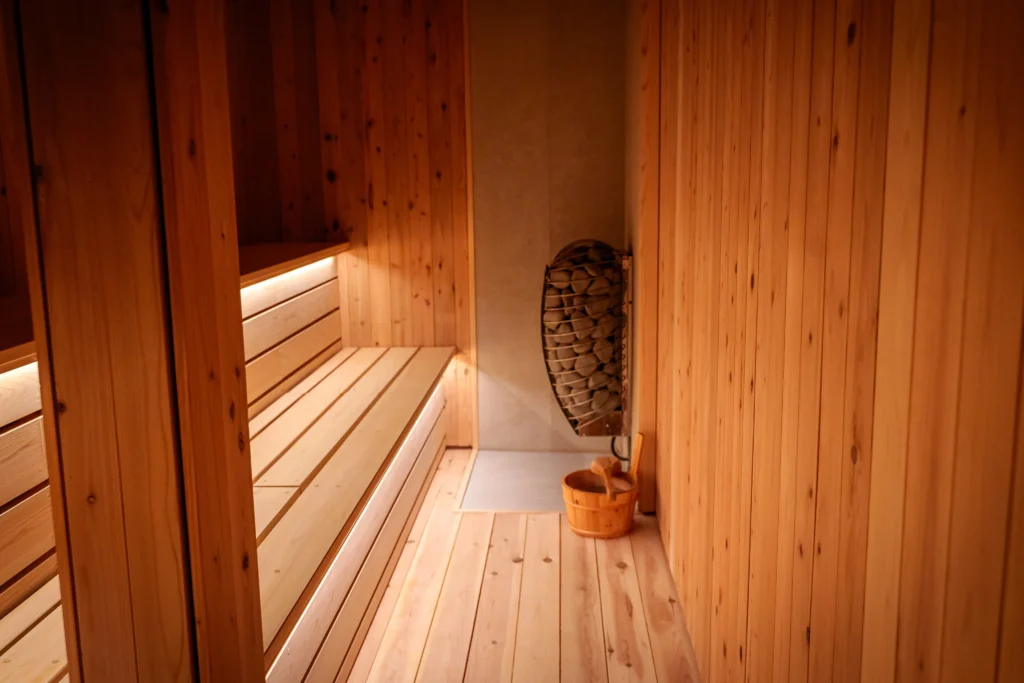
The sister property, Suimu (literally “dreaming sleep”), features a private sauna and a small bar. We booked the sauna before dinner (guests can arrange this in advance, and even use it before check-in if requested). The room itself is simple, with no unnecessary decoration—just pure, steady heat. The cold-water bath is fed by the Wasabi-zawa spring, giving the water a soft, refreshing quality. The resting area is calm and quiet, allowing my breathing to settle into an easy rhythm.
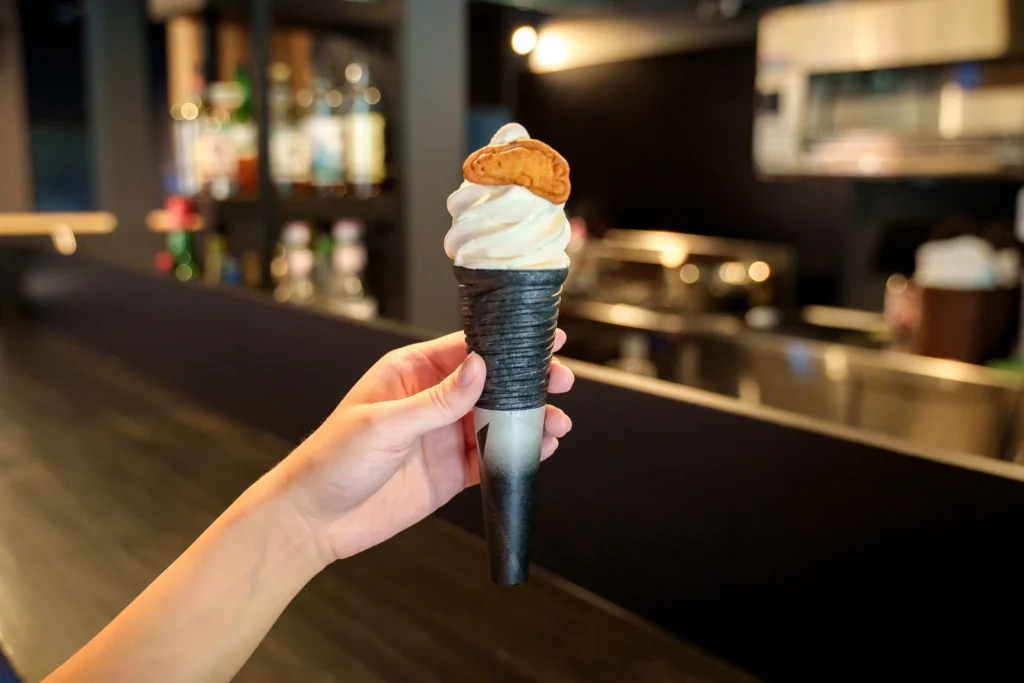
After the sauna, I treated myself to a soft-serve ice cream. The sweetness really hit the spot, bringing both my body temperature and my mood back to a comfortable balance. Afterwards, we returned to Tamakiya to freshen up and head to dinner. Entering the multi-course meal of Niigata ingredients and sake pairings in this refreshed state made the flavors sink in effortlessly.
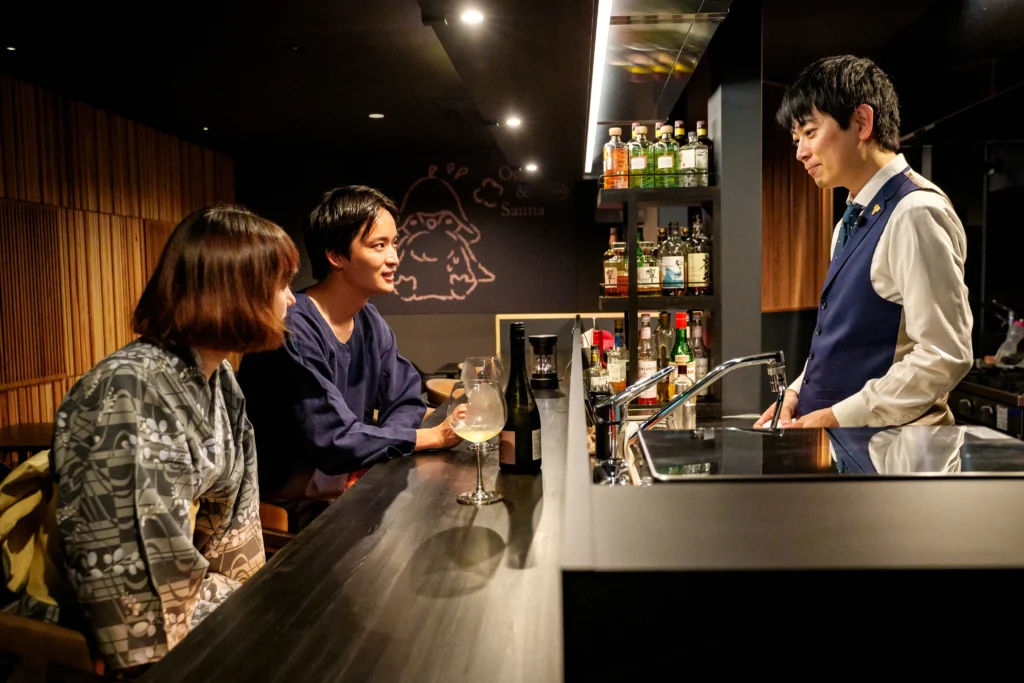
At night, if you still have the energy, you can return to Suimu’s bar for a drink. I liked how the day flowed naturally without feeling forced, each moment leading into the next.
【Dinner】 A Journey into Local Gastronomy with Sake Pairings
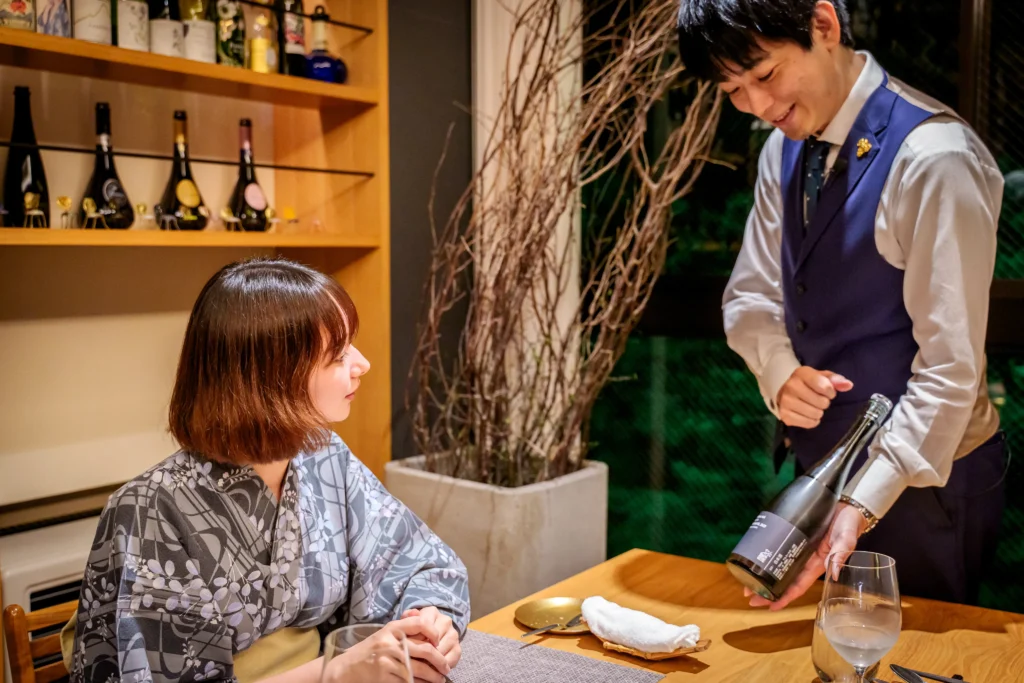
Finally, it was time for dinner. I chose the full course: inventive French cuisine by Chef Akira Kuriyama paired with a premium sake pairing curated by the owner, Yuichi Yamagishi. This “symphony of fine food and sake” is the kind of indulgence you can only experience at Tamakiya.
Although Chef Kuriyama is originally from Tokyo, he fell in love with Niigata’s local ingredients and often visits nearby farmers himself. Sometimes, he even forages mountain vegetables on his own. That passion translates directly onto the plate—each dish felt like a creative fusion of tradition and modernity, one after another.
To accompany them, Mr. Yamagishi selected a lineup of sakes chosen with the precision of a true master. In addition to being a certified sommelier, he also holds the prestigious title of Sake Shō (酒匠)—an advanced qualification above the regular sake sommelier, held by only a few hundred people nationwide. His knowledge is unrivaled in Niigata, backed by firsthand visits to breweries and wineries both within the prefecture and beyond. Every bottle served here is one he has personally tasted and selected. Among them were even original labels he co-developed with local brewers.
In the following section, I’ll introduce each course we enjoyed that evening.
Three amuse-bouches paired with the private-label sake KAMOSU MORI—a sparkling-style sake flavored with hojicha (roasted green tea) and hibiscus.
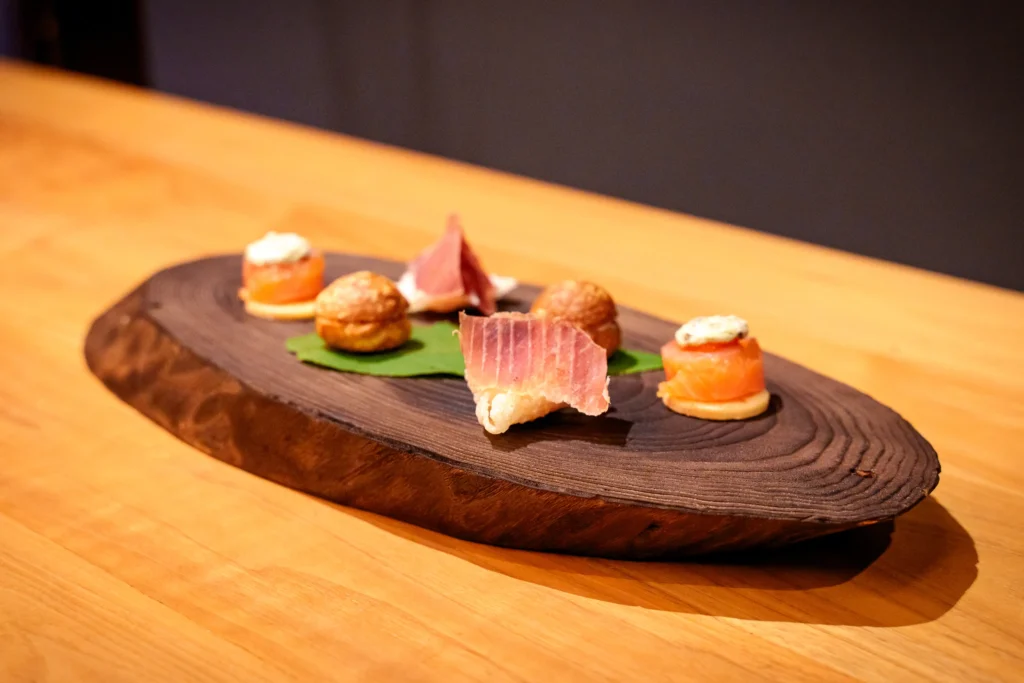
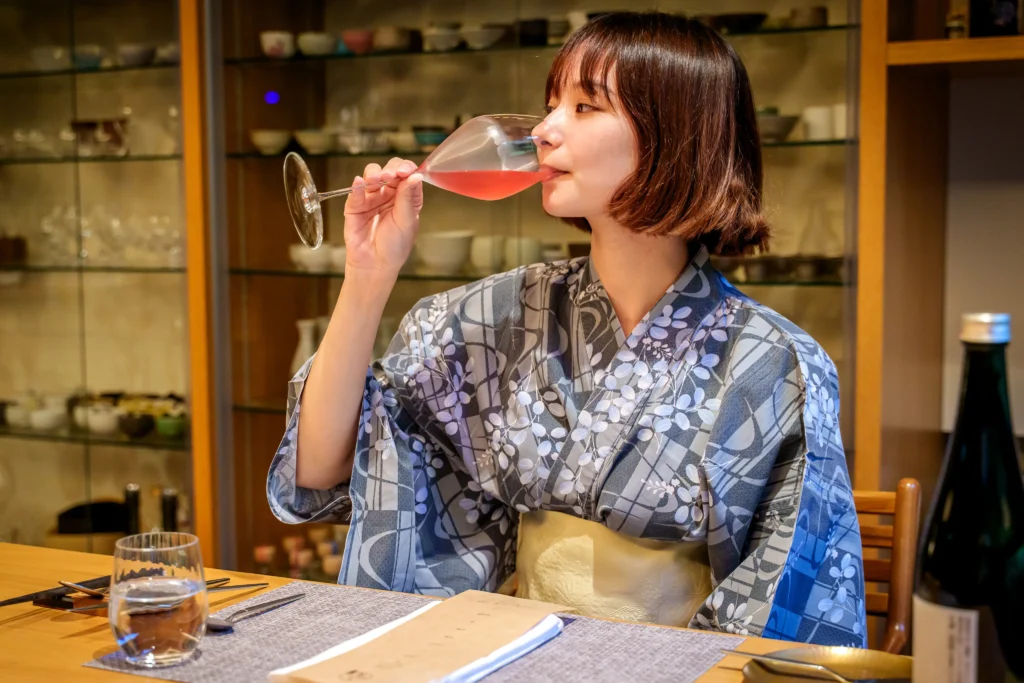
We enjoyed the private-label sake KAMOSU MORI alongside a selection of small bites, including Miyuki trout, liver pâté, and Tsumari pork prosciutto. The sake had a bright, refreshing flavor that added a light, elegant touch to the start of the course.
Corn soup paired with SAKE HUNDRED Nikko (Nikkan means “two lights,” a private-label sake from Niigata)

The soup, made only from locally sourced milk and corn, had a gentle natural sweetness, which paired beautifully with the aromatic sake Nikko (“Two Lights”). Most sake is brewed using a three-step fermentation method called sandan-shikomi, in which rice, koji, and water are added in three stages. Nikko, however, is made using a special four-step fermentation (yondan-shikomi) combined with shiro-koji (white koji mold), resulting in a more refined flavor that highlights both umami and subtle acidity.
Marinated madai (Japanese sea bream) with zucchini, ricotta cheese, and tomato confit, served with a shiso tomato sauce, paired with Abe 10th Anniversary Junmai Daiginjo “Shiro” sake.
The konbu-jime madai (sea bream lightly cured with kelp) paired refreshingly with shiso, creating a bright, herbaceous harmony. It matched perfectly with the sake from Abe Shuzo in Niigata, which is dry with a gentle acidity.
Grilled Oonaga eggplant with eggplant mousse, nanban shrimp, and shellfish jelly, paired with Matsunoi Junmai Daiginjo sake.
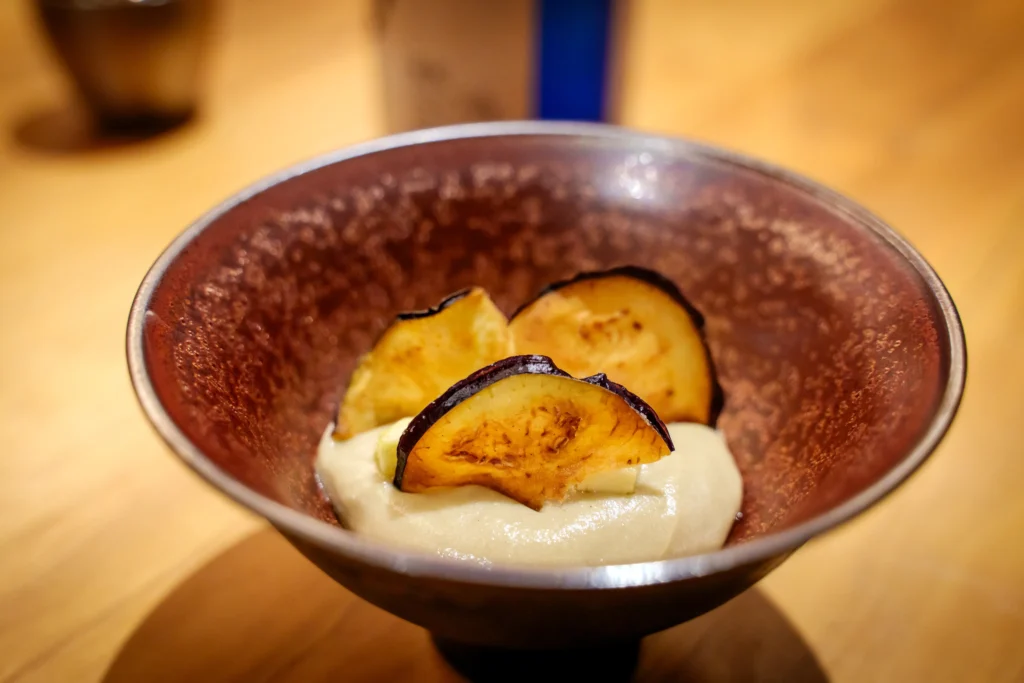
The dish was layered for an interactive tasting experience. The top layer featured a mousse and chips made from locally grown Oonaga eggplant; the middle layer had nanban shrimp cooked in an oil infused with the refreshing aroma of sansho (Japanese pepper); and the bottom layer was a jelly rich in shellfish umami. Each bite offered a different flavor, with the bright sansho tying the dish together beautifully.
The sake pairing was from Matsunoi Shuzo, a brewery in Tokamachi with over 100 years of history. Light and clean on the palate without being overly fruity, it perfectly complemented the flavors of the dish.
Turban shell (sazae) confit with a liver sauce, cucumber, and fried okahijiki (a Japanese coastal green), paired with SAKE Margherita sake, which has tomato and basil notes.

This dish, rich in the umami and slight bitterness of the sea, was paired with SAKE Margherita, a sake infused with tomato and basil flavors. During its brewing process, actual tomatoes and basil are added, giving it a flavor reminiscent of a Margherita pizza. Despite this playful profile, it pairs surprisingly well with the sazae (turban shell), creating a combination that feels almost like culinary entertainment.
Tilefish× Maison Aoi Untitled 01,2025
The fried and simmered eggplant (kome-nasu) with yugao (a type of squash) sauce enhanced the dish’s delicate umami and vibrant colors, while the sake “Maison Aoi Untitled 01, 2025” brought a refreshing balance to the flavors. This sake comes from Aoi Shuzo, a brewery in Nagaoka, Niigata. Aoi Shuzo was established in 2024 when a new team took over the historic Takahashi Shuzo, which had been in operation since the Edo period. The brewery now produces sake with a vision reaching across Japan and beyond, crafting their drinks for both local and global enjoyment.
Roasted venison with a poivrade sauce (a classic French peppercorn sauce), paired with Manotsuru Sado Kinzan Aged Junmai 2013, a sake matured in barrels from the historic Sado gold mine.

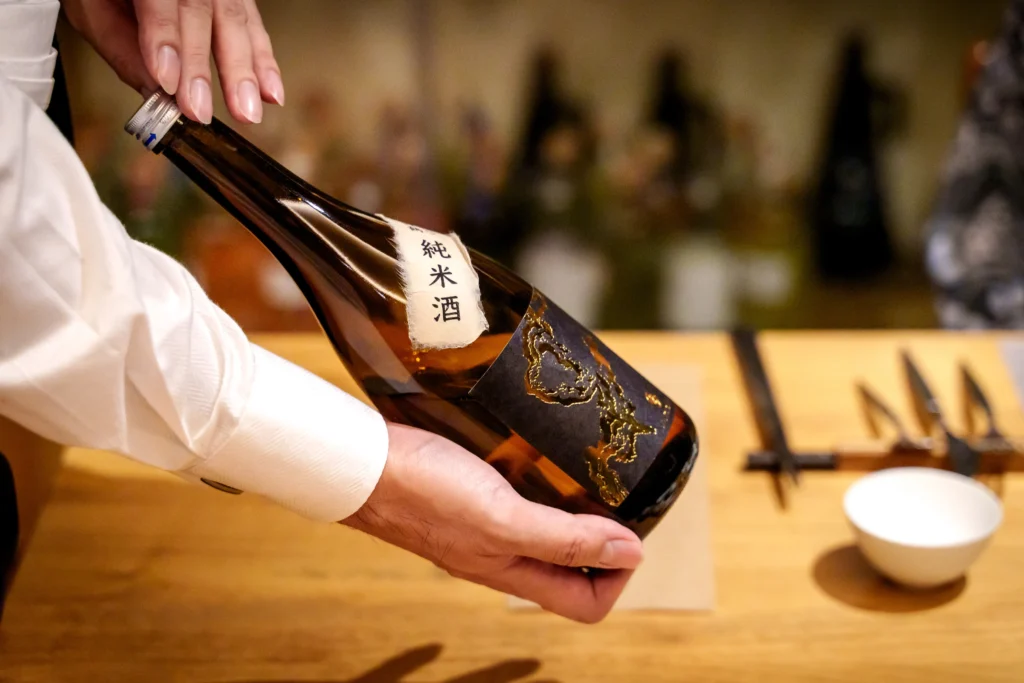
Next came the roasted venison. Enjoyed alongside the aged sake, it brought out the rich umami of the meat, letting the flavors linger and deepen with every bite. I was also drawn to the fact that the venison came from a female hunter, adding a thoughtful and personal touch to the dish.
The sake, Manotsuru, is brewed on Sado Island in the former town of Mano. It has received numerous gold medals at prestigious competitions, including the National New Sake Awards (Japan), International Wine Challenge (UK), Kura Master (France), and Milano Sake Challenge (Italy).
Japanese-Style Dessert: Green Walnuts & Peach with Kanten, Black Soybeans, and Mint × Dongfang Meiren Tea (Non-Alcoholic))
This delicate Japanese-style dessert featured rare green walnuts and locally grown peaches, complemented by kanten (agar jelly) and black soybeans. A touch of mint syrup added refreshing notes, creating a harmonious balance of subtle sweetness and umami flavors. It was paired with Dongfang Meiren tea (Oriental Beauty tea), a non-alcoholic oolong tea from Taiwan.
Melon Soda–Inspired Dessert (three layers: carbonated melon mousse, vanilla ice cream, and lemongrass jelly) paired with Fomalhaut, a sparkling sake
This playful and refreshing dessert, inspired by carbonated melon soda, combined vanilla ice cream and lemongrass jelly in three layers. It was paired with FOMALHAUT, a premium sweet sake (kijōshu type) from Abe Shuzō. The sake’s dessert-like sweetness and balanced acidity complemented the bright, fizzy flavors of the dessert beautifully.
Herbal Tea with Four Assorted Desserts
To conclude the dessert course, a fragrant herbal tea was served alongside four small desserts, each with a distinct character.
For the sake pairing course, guests can choose between the standard or premium options, and non-alcoholic pairings are also available for those who prefer.
In recent years, Japanese sake has been gaining popularity in Taiwan, and many travelers visit breweries or enjoy local tastings. However, the experience at Tamakiya goes far beyond simply drinking sake. It is a multi-sensory experience that combines the depth of sake, the artistry of the cuisine, and the ambiance of the space itself. Guests are sure to be impressed by the harmonious integration of ingredients, pairings, and environment.
Morning Feast|Enjoy a Breakfast Featuring Uonuma Koshihikari Rice and Local Vegetables from Niigata

Upon arriving at the dining room, we were first presented with a large plate featuring small portions of mountain vegetables (sansai) and seasonal local produce. None of the flavors were overpowering; each ingredient’s natural taste came through clearly. I learned that, depending on the season, the chef sometimes personally gathers the mountain vegetables from nearby hills, which made me nod in agreement—no wonder it tastes so good.
I’m not usually a fan of strong flavors in the morning, but here the gentle seasoning kept my chopsticks moving. Looking out the window at the lush green mountains, I took a deep breath—and just one bite made me feel fully awake and refreshed.
And then there was the Uonuma Koshihikari rice. The freshly steamed aroma hit me immediately, and the first bite revealed its gentle sweetness—so good that I couldn’t resist going back for seconds. I enjoy breakfasts in Taiwan as well, but here it felt truly unique: eating rice and vegetables grown right in Niigata, as if tasting the land itself.
The small side dishes were perfectly portioned—enough to enjoy variety without feeling heavy. It was a morning meal that didn’t burden the body, giving me just the right energy to continue the day’s journey.
Summary | The Vision of Yuichi Yamagishi, Owner of Tamakiya
Yuichi Yamagishi, the fourth-generation owner, studied traditional Japanese cuisine in Tokyo before returning to his hometown and steering Tamakiya toward becoming a “sake-focused inn.” He personally visits sake breweries and restaurants, carefully selecting only what he truly trusts, and even ventures into crafting his own original sake. The more I listened, the more I realized he is someone who faces his passions head-on.
Another thing that left an impression was the sense of security within an extraordinary setting. Because it’s a small inn, the staff’s timing and manner of interaction are considerate, always attentive to the guest’s pace. Even the sake pairings are not forced; they are subtly adjusted according to the guest’s condition or expression. As a result, I could fully relax and genuinely enjoy both the food and the sake. I usually don’t drink much, so I was initially worried about the pairing. Yet, the staff carefully noticed my situation and suggested non-alcoholic options, and the thoughtfulness of Yamagishi-san and his team really shone through.
My stay at Tamakiya was more than just accommodation—it was a sensory experience of the land that allowed me to relax just enough. The invigorating hot springs, gentle cuisine, emotionally moving sake, and peaceful surroundings—all combined into a memorable experience I sincerely hope to repeat.
Taiwan and Niigata’s snowy regions differ in climate and culture, which makes visiting this place all the more meaningful. With convenient access (including direct flights from Taipei to Niigata) and for those interested in sake, hot springs, and local gastronomy, I wholeheartedly recommend Tamakiya, the Sake Inn in Matsunoyama Onsen.
Exploring Kiyotsu Gorge, One of Japan’s Three Great Canyons
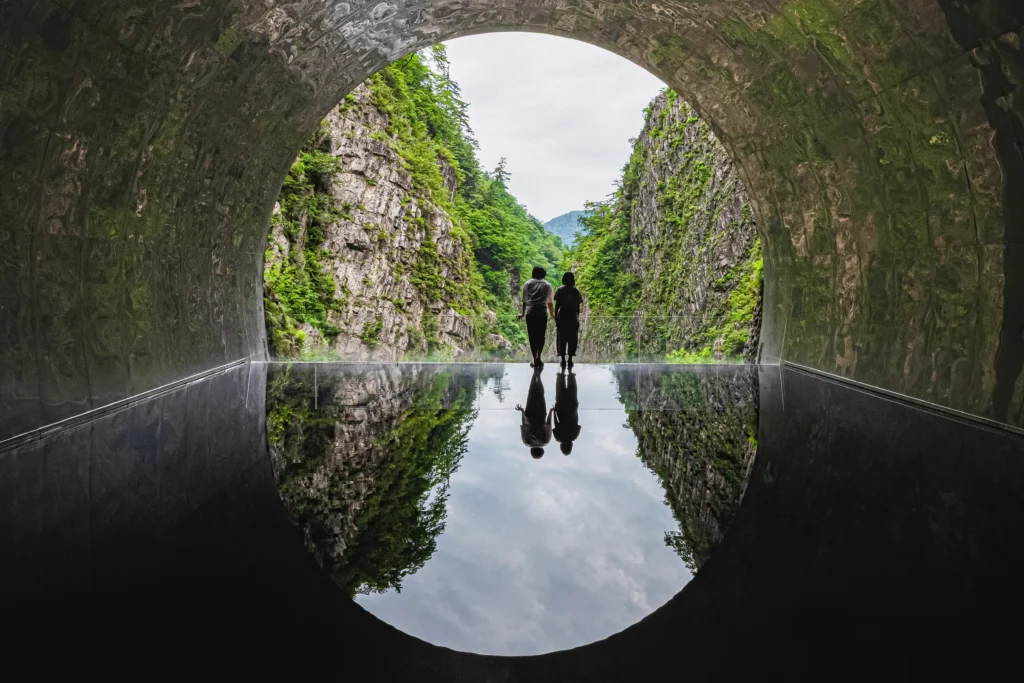
On the morning of our departure from Tamakiya, we set out for Kiyotsu Gorge.
Located in Tokamachi City, Niigata Prefecture, Kiyotsu Gorge (Kiyotsukyō) is known as one of Japan’s Three Great Canyons, alongside Kurobe Gorge and Ōsugidani.
In the past, visitors enjoyed its breathtaking views from hiking trails, but today it has transformed into a unique destination that captivates travelers from around the world.
During our visit, we experienced Kiyotsu Gorge not just as a scenic spot, but as an immersive art space—enjoying the interplay of nature, history, and creative design firsthand.
【About Kiyotsu Gorge】Majestic Columnar Rock Formations Shaped by Nature

Kiyotsu Gorge is famous for its columnar jointing—hexagonal rock columns that create a unique and striking landscape. This scenery was designated a National Place of Scenic Beauty and Natural Monument in 1941.
Around 15 million years ago, eruptions from undersea volcanoes created layers of rock. When magma flowed into these layers and cooled, the columnar structures were formed. Over millions of years, the Kiyotsu River carved through these rocks, shaping the V-shaped gorge we see today.
This natural formation can be seen as a gigantic sculpture created by nature, and it is scientifically and geologically invaluable.
【Into the Tunnel】 Walking the “Tunnel of Light”

In 1996, the Kiyotsu Gorge Tunnel was opened to allow visitors to safely enjoy the spectacular gorge scenery. Over time, however, visitor numbers declined, and a major renovation in 2018 aimed to bring renewed attention to the site.
The redesign was led by Ma Yansong, a Chinese architect and founder of MAD Architects. By blending nature, architecture, and art, the tunnel was transformed into the “Tunnel of Light”, an immersive art experience that lets visitors walk through the gorge in a completely new way.
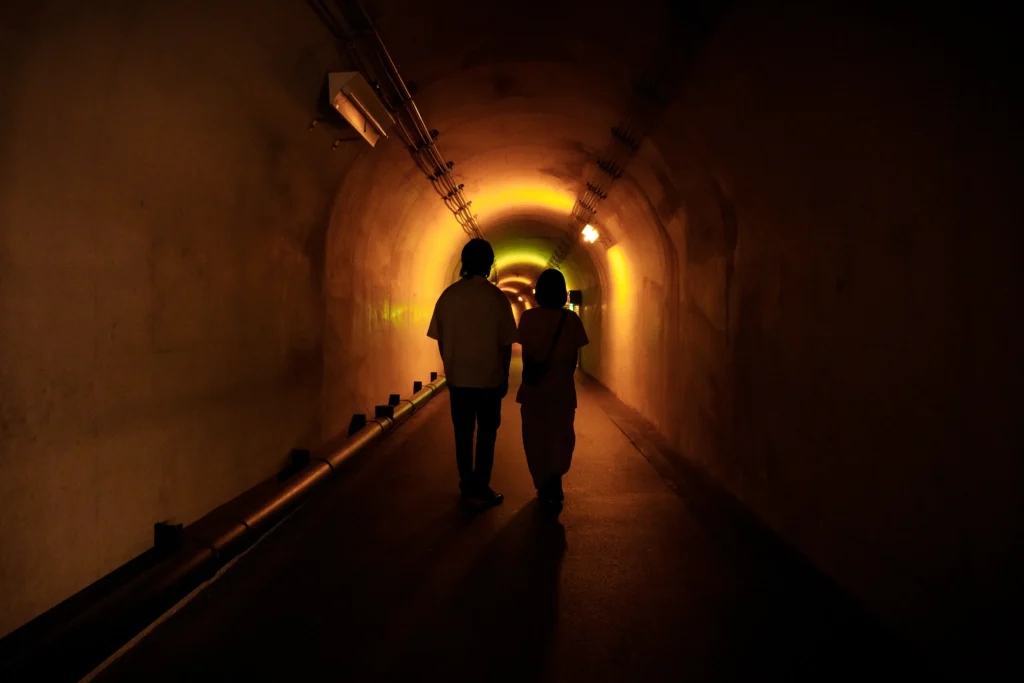
Inside the tunnel, lights of various colors illuminate the space, shifting in appearance depending on the time of day and the angle from which you view them.
What struck me most, however, was the sound—a gentle, almost otherworldly noise that could be wind, water, or something in between. It felt as if the tunnel itself were breathing, alive in its own subtle rhythm.
【Viewing Platforms】An Art Experience in Harmony with Nature
Inside the tunnel, there are three viewing platforms in total. Each platform is designed as a unique spatial art piece, offering an experience that could be described as “walking through an art gallery.”
The second viewing platform is called “Flow.”
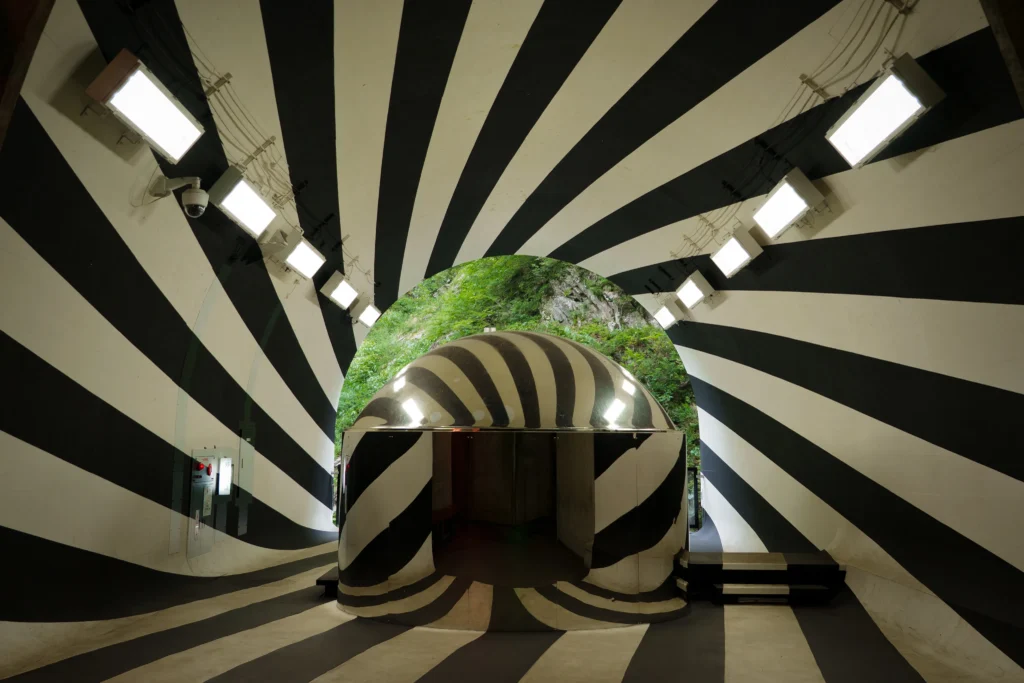
The flow of the Kiyotsu River is reflected in the stripes on the walls and floor, so that the entire space expresses the fluidity of water.
Interestingly, the silver object in the space is actually a toilet. It features a one-way mirror, allowing people inside to see outside while remaining invisible from the outside, turning even the restroom into part of the art installation. The effect is quite surreal and unexpected.
Third Viewing Spot: “Shizuku”
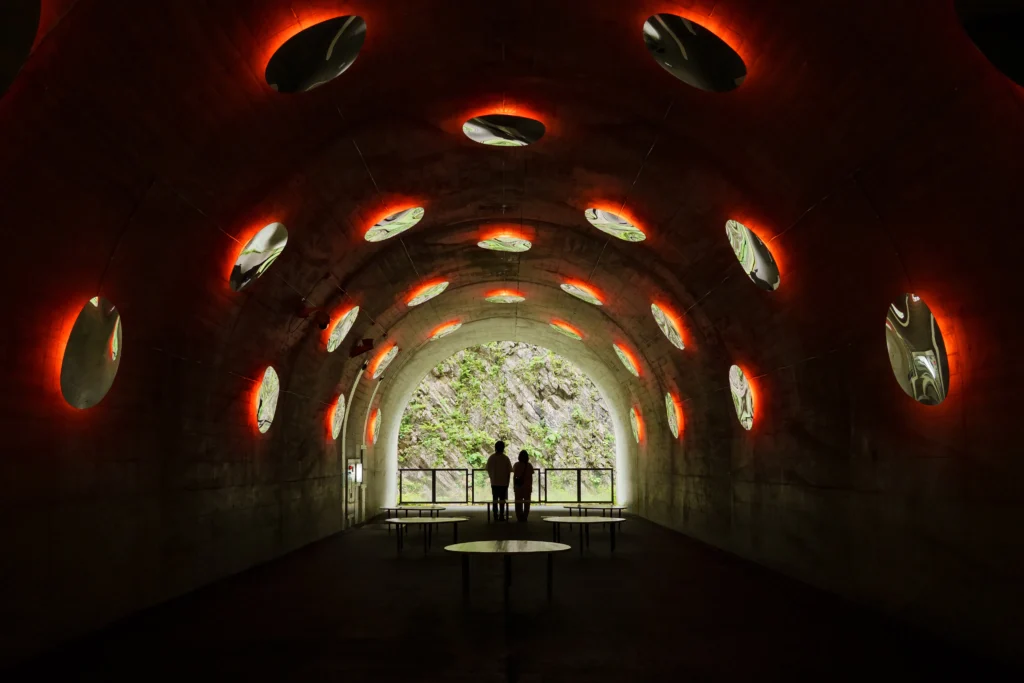
Countless droplet-shaped mirrors are scattered across the curved walls, reflecting visitors so that they themselves become part of the artwork.
At sunset, red lights from behind gradually color the space, creating a warm, immersive glow.
At each viewing spot, the raw rock faces of the Kiyotsu Gorge are immediately visible, so that the man-made tunnel and untouched nature coexist in a fascinating and delicate balance.
【Panorama Station】Another Gorge Reflected in Water
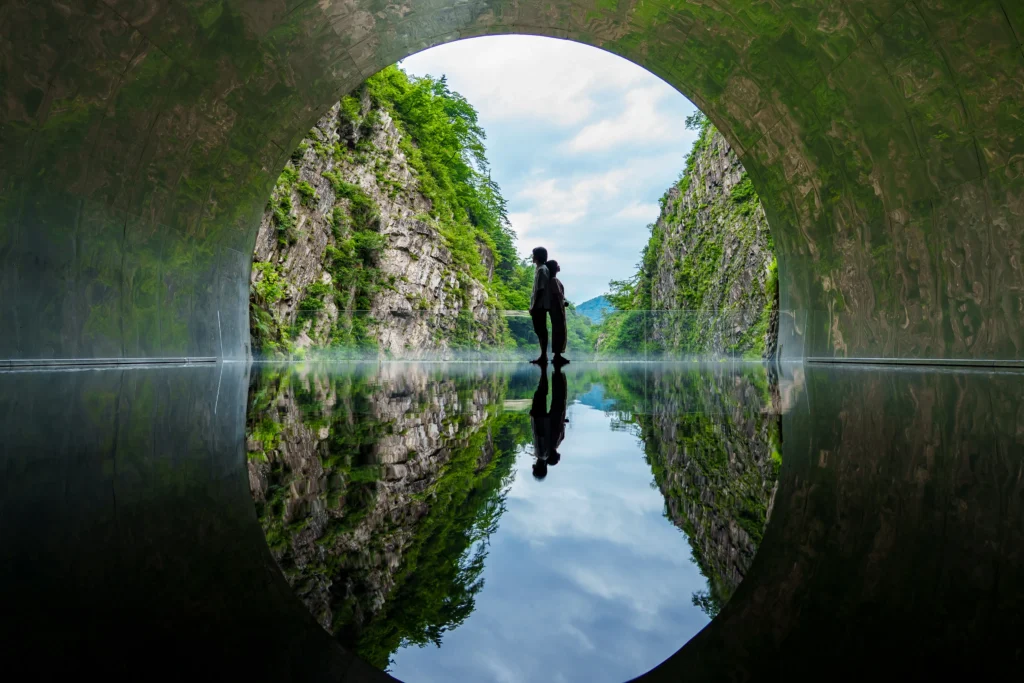
At the end of the tunnel lies the Panorama Station, called the “Light Cave”.
This space left the deepest impression on me.
The floor is covered with a thin layer of water, creating a “water mirror” that reflects the light and the scenery above. Surrounded by semi-reflective stainless steel, the green forests and rocky cliffs of the gorge appear both real and mirrored, creating a magical, almost surreal effect.
When you step into the water, its coolness spreads from your feet upward, giving the sensation that you are literally becoming part of the gorge.
A Quiet Moment with the Panorama Station Afterglow and Foot Bath
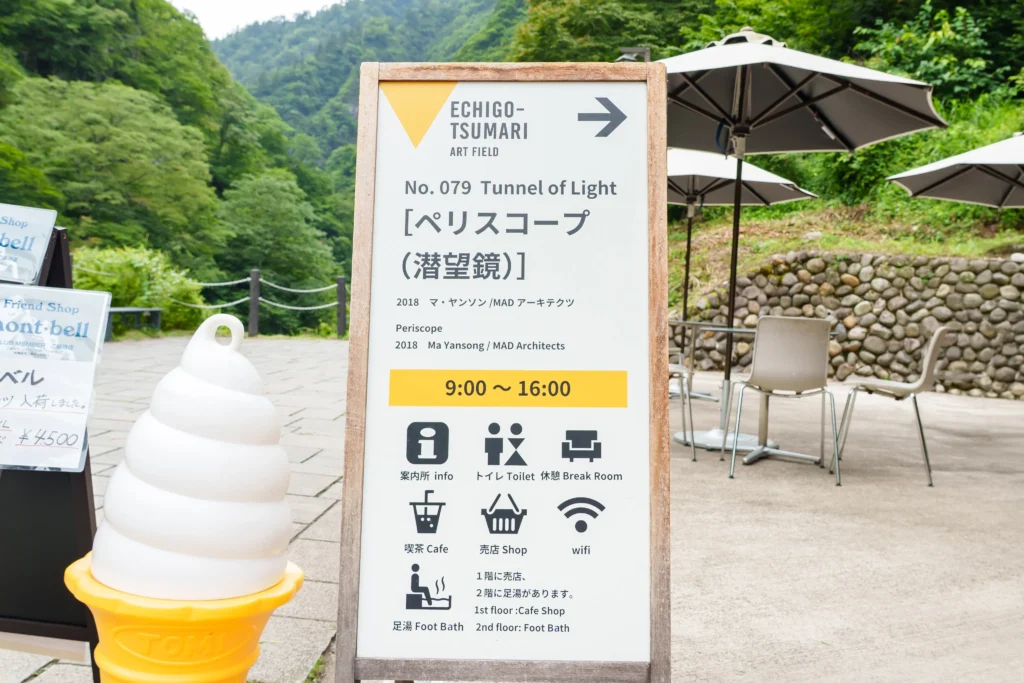
After fully enjoying the magical scenery at Panorama Station, there’s a perfect spot to pause on your way back to the entrance facilities of Kiyotsu Gorge.
This is the foot bath (ashiyu) located on the second floor of the Periscope Entrance Facility, at the entrance of the Kiyotsu Gorge Tunnel in the Kiyotsu Gorge Onsen area.
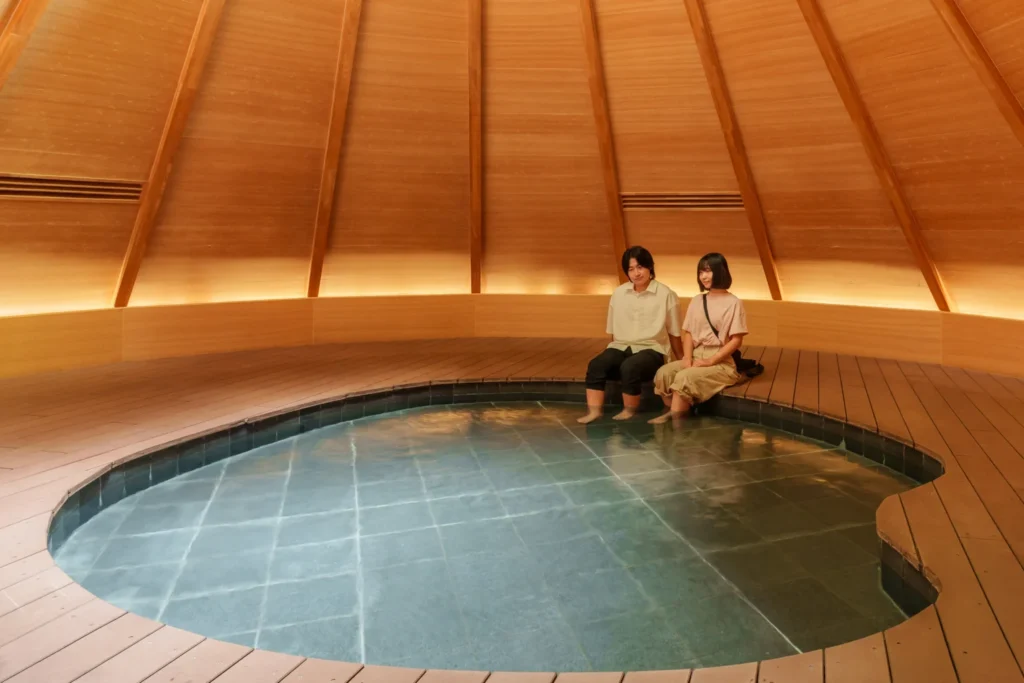
Stepping out of the tunnel’s cool air, the gentle warmth of the foot bath seeps through your body, melting away both the travel fatigue and the lingering awe of the gorge.
The water is a simple sulfur hot spring (tanjun iou onsen), heated to about 41°C (105.8°F). It is believed to help with nerve pain, muscle aches, and joint pain. This foot bath, set in the midst of nature, offers a truly relaxing and restorative experience.
If you visit outside of winter, I highly recommend ending your gorge visit with a soak in this soothing foot bath, letting both mind and body fully unwind.
【Conclusion】 What This Land Invites You to Reflect On
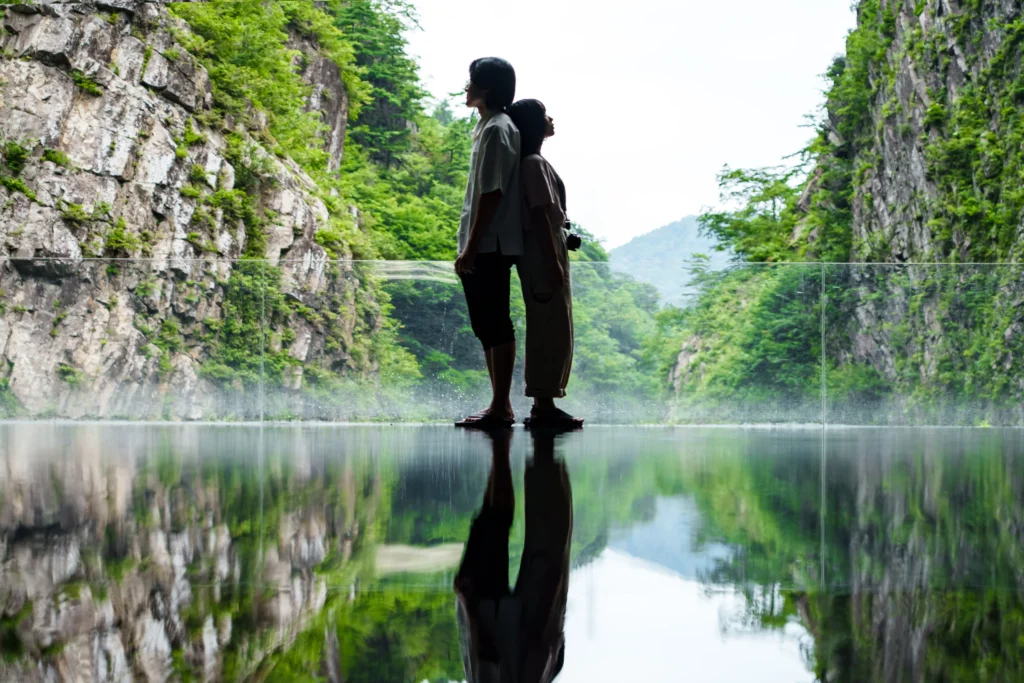
The “Tunnel of Light” at Kiyotsu Gorge is not just a tourist spot—it feels like a passage where nature and humans resonate together.
As I walked through the tunnel, I found myself listening closely to the subtle sounds, noticing the flickering of light, and feeling the cool water under my feet. Without realizing it, I was taking deep breaths again and again.
It was a moment that seemed to restore a sense of connection with nature, something easily lost in everyday life.
Kiyotsu Gorge is more than just beautiful scenery; it quietly invites reflection on the strength and fragility of nature, and our relationship with it. For those wanting photos, early morning is ideal when fewer people are around.
If you ever want to step away from the noise of daily life and reconnect with your senses, visiting this tunnel is an experience not to miss.
▷Learn more about the Kiyotsu Gorge
▷Discover more about Tokamachi
Book your stay at “Tamakiya” here:https://www.ryokan-book.com/en/area/tokamachi/ryokan/tamakiya/






